The Korean People’s Navy is on the surface, pun intended, an antiquated navy comprised of mostly Cold War Soviet era technology which has been handed down.
The North Korean regime has prioritised missile development and a large conventional army of over a million strong, with a considerable aircraft strength. It could cause tremendous damage if a war breaks out, and inflict untold civilian casualties.
Numerically the disparity between different branch services of the North Korean military can be seen. Its Air force strength consists of just under a 1000 aircraft with 458 fighter aircraft, 572 attack aircraft, 100 transport aircraft, 169 Trainer Aircraft and a total helicopter strength of 202, with 20 attack helicopters.
Its army is populated by a formidable strength of approximately 5,000 tanks, 4,100 armoured fighting vehicles, 2,250 self-propelled artillery, 4,300 towed artillery, and 2,400. (According to Globalfirepower.com).
The North Koreans place greater emphasis of smaller ships, with a total of 11 Frigates, 2 Corvettes, and 76 submarines, 438 patrol craft and 25 mine warfare vessels. It also has a total Merchant Marine Strength of 160 ships and 8 ports.
According to the National Interest (2017) the Korean People’s Navy “Organizationally, the KPA consists of a naval headquarters, two fleet commands, sixteen squadrons, two naval sniper brigades and scattered coastal-defense units on both coastlines. It also controls naval training centers, ports and logistics centers, and even controls shipbuilding for the fleets.”
Most of the ships it operates are either vessels of Soviet, Chinese and North Korean origin. However, the vast majority of ships comprises of gunboats, with 80% of the ships to be under 200 tons. These gunboats, would be armed with heavy machine guns and a light cannon, with the largest guns taken from the Second World War, T34 turret and put on the gunboat.
While other boats are equipped with multiple rocket launches, however, these are largely inaccurate and are more likely to be used in shore bombardment roles during an amphibious assault for instance.
Other smaller ships have torpedo launchers, effectively becoming torpedo boats, which could cause damage to ships engaged in fighting with the Korean People’s Navy. The majority of these vessels are operating only 50 miles from the coastline.
However, in regards to international action, and military manoeuvres it’s the Korean People’s Navy which has seen the most action. Historically this includes the 1999 First Battle of Yeonpyeong, the 2002 Second Battle of Yeonpyeong, and the 2009 Battle of Daechong. Although these naval incidents can be seen as mere skirmishes what is interesting is the antiquated have inflicted damage upon the Republic of Korea’s Navy but this has been at a higher cost of casualties of ships. This is due to the crudeness of design, and lack of modern firepower and technology.
However this does not mean we should entirely disregard the firepower, or the ability of the Korean People’s Navy to wage war. The two main strengths it has is its submarine feet and its amphibious capabilities including the ability to launch Special Forces in a given warzone.
The Pentagon has noted that the North Korean People’s Navy has 70 submarines of unknown types. In addition, the sinking of the South Korean corvette ROKS Cheonan was considered by a 2010 multinational report to be sunk by a North Korean midget submarine. The South Korean Ministry of Defence white paper says North Korea’s large fleet of conventional submarines could pose a potential threat.
It is quoted as estimating:
“Underwater forces are composed of about 70 Romeo-class submarines and submersibles”
A small number of submarines could support special warfare operations with navy divers, but most of the submarines are designed to protect the coastline of North Korean.
However, there is one submarine that grabs attention. This is the Gorae otherwise known as the “Whale” which is a ballistic missile submarine. The Covert Shores website estimates this has the potential to deliver nuclear weapons if needed. Relative to the other ballistic missile submarines, the Sinpo class will be shorter in ranged, and stay on station for shorter periods of time. However, it has the ability to hide in littoral waters, and at the bottom of the sea bed for increased stealth.
While the North Korean submarine technology can be considered crude, it has been employed, and with the advent of missile testing using liquid fuelled missiles, it is quite conceivable in the near future for a nuclear armed ICBM submarine which could in theory threaten the Western Coast of the United States and launch an attack on one of its cities. Other targets could include Hawaii, and Guam, as the distance between North Korea, and the mainland United States is vast.
The configuration of the Gorae is as follows; it is 213 ft long, with a displacement of 1,650 tons with a crew between 70 and 80. In terms of launch capabilities the Gorae has a single ballistic missile launch tube in the sail to accommodate the Pukguksong-1 (KN-11) submarine launched ballistic missile. It is also estimated to have a range between six hundred and nine hundred miles. (According to the National Interest).
Its amphibious capabilities includes the elite Korean People’s Navy two sniper bridges, which could be deployed by numerous landing craft and also hovercraft. This could cause disruption to allied convoys, disrupt communications, command and control, and also the ability of allied forces to project offensives within a timeframe. Essentially these special operations could cause havoc if unleashed.
So does the North Korean People’s Navy pose a threat? Simple answer is yes, but it is not without qualifications. It is by no means a blue water navy, and it does not have the ability to go head to head with the US Navy, or the Republic of Korea’s Navy. However, its navy can fight an asymmetric naval war, by disruption, and causing a nuisance.
The South Korean Ministry of National Defence white paper from 2014 reads:
“The mission of these underwater forces is to disrupt sea lanes of communication, lay mines, attack surface vessels, and support the infiltration of special operation forces. In particular, North Korea is improving its capability for underwater attacks, as it appears to be building new types of submarines and submersibles, including a new submarine that can carry ballistic missiles, following the development of new torpedoes.”
While its fleet of small diesel submarines and torpedo boats may be able to inflict limited damage upon the enemy, it will only be able to frustrate its movements, rather than totally destroy the opposing force.
Therefore, it is possible to conceive that the North Korean People’s Navy would have a supporting role, with the primacy of strategy given to both land and air forces. Its amphibious force would be an asset to an invasion scenario, and would complement ground forces. The main concern, is the massive amounts of artillery pointed out South Korea, and the devastation that a conventional war on the peninsula would take.
In summary, in relation to North Korea’s Maritime capabilities does it pose a significant threat to the region? The answer is yes, but with the caveat of the North Korean Navy operating alongside the massive land based army and in conjunction with the North Korean airforce. If the North Koreans launched a preemptive strike, all these forces would have to act in a synchronised fashion to overwhelm their opponents quickly and deny access.
Therefore, to conclude, North Korean Navy alone is not a strategic threat, but is seen as a subsidiary force to both Air and Land forces of the North Korean military. It will frustrate its opponents, and attempt to inflict damage upon forces attempting to enter North Korean waters or attempt to capture their ports.
However, the main threat is the increasing conventional ballistic missile arsenal and the potential for the North Korean regime to weaponised these into nuclear arsenals. The regime relies on nuclear deterrence as a strategy to overcome its technological deficiencies.


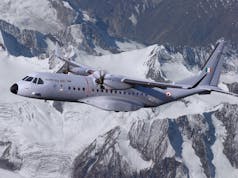
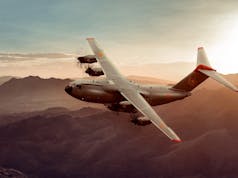
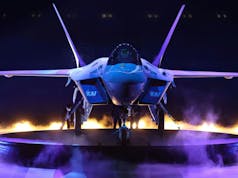

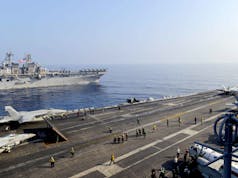
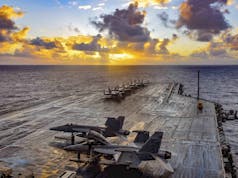
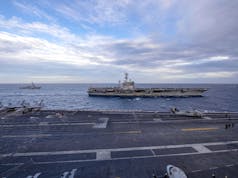



The North Korean Navy would pose virtually no threat. Its large fleet of coastal gunboats and tiny, ancient submarines would be a concern only to an amphibious landing force. The geography of North Korea means that its western and eastern fleets could not reinforce each other. It has a handful of frigate sized vessels that would be easy first day targets for a western naval force. Incidentally, their Air Force is similarly large but obsolete with only around fifty Mig 29s posing any threat at all. Their huge army and numerous SAM systems would pose a threat due to their numbers and proximity to South Korean cities rather than the quality of their equipment. The North Koreans could cause huge civilian casualties within the first few days of conflict. A well-prepared western force would clearly annhilate North Korean forces within a few weeks. A conflict would be reminiscent of the first Gulf War except that there would likely be significant civilian casualties in the first few days.
It would not be like the first gulf war, main differences
1) it’s not a desert, it’s south east Asia.
2) it would be a defensive operation with almost no space before the enemy hits the key objective.
3) it would likely involve trying to shift a very large brainwashed group of fanatically loyal ( brainwashed)troops from a friendly capital city.
4) The South Koreans respect the threat so should we.
Who did the sums on the NK air force ? ?
I looked over this a fair time ago, and my personal verdict was “impressive”. This worries me:
“While its fleet of small diesel submarines and torpedo boats may be able to inflict limited damage upon the enemy, it will only be able to frustrate its movements, rather than totally destroy the opposing force.”
No, if you have cast numerical superiority for an action, numbers count. A carrier group for instance only has a few warships, and while incredibly more capable, there are but a few, a dozen or so. The trick is just to achive local superiority. Never underestimate a potential “enemy”.
“vast” not “cast”. Oh for an edit!
WRT the Nork’s navy the only dispute is whether they would be annihilated by lunch time on day-1 or by tea time.
the ships couldn’t hit an elephants backside with a banjo. a total scrap heap waiting to be sunk or just scrapped.
I don’t know where the numbers for the air force came from. The only really credible fighter they have is the MiG-29 which they reportedly cannot fly at the moment due to lack of spare parts or fuel and they have 35 of them in comparison to almost 200 F15’s and F16’s fighters on the south Korean side. Thats before you take into account the US and whatever Japan might feel inclined to contribute in a conflict.
The analysis of the navy seems accurate, but the airforce would be doing well to even put up token resistance. The real danger is the artillery and them being able to exhaust precision weapon stocks with the number of tanks and other assets they have.
Their artillery is strong, but not as strong as the numbers indicate.
The vast majority of shell artillery cannot reach Seoul.
The ones that can, would need to be right on the border and within near annihilation range from counter fire on the Southern side of the border.
Their rocket artillery is pretty strong, but one would have to think these would also be mostly eliminated on day 1
This is why the NORKs want nukes….. it is probably cheaper than trying to compete conventionally
I think a full blown conflict on the Korean peninsula would be an extremely bloody war with upwards of a million dead in a short period of time.
The North Koreans have the weight in numbers (obsolete blunt fist) to punch through the border and Strike Seoul.
The initial gains would be rapidly countered as their command and control would be wiped out and they would be thrown into total disarray.
Collapse of the North Korean regime would occur within weeks, as their military and government would be systematically destroyed. China would have to deal with a mass of humanity, as panicked starving civilians and collapsed military units flowed over the boarder.
North Korean collapse would be assured, Nuclear weapons or not, but casualties would be horrendous and it would likely herald a world wide recession in its wake.
The big worry is would China let that happen, I suspect China would get very iffy (aggressive) with anything beyond purely defensive actions by the west.if we start systematically taking North Korea apart they are going to react strongly. A ground war in the Korean peninsular is going to as you say kill many 100s of thousands, my worry is a wider war between the western democracies and Japan on one side and China on the other, I’m not sure where that would stop as all ther other nasty fault lines start to open up…… The Korean peninsular could be the 21st century verson of the Balkans.
the issue on the korean peninsular is the same as its always been, if it all kicked off what would china and rusia actually do. the wrong move from either country could easily start a ww3
I really don’t think China would get involved in a shooting war unless it was absolutely forced to.
Our global economy is totally interlinked and war would mean mutually assured economic destruction for everyone.
China might be forced into temporary occupation of North Korea, to stabilise the situation and install a pro Chinese administration.
They certainly wouldn’t want a unified Korea in my opinion.
The Chinese are the only players who can exert any influence over the North Korea, they certainly seem to be in process of turning the thumb screws and probably desperately urging “dangerous Donald” to shut up via the back channels.
all trumps channels ,especially the one under his nose, should be closed.